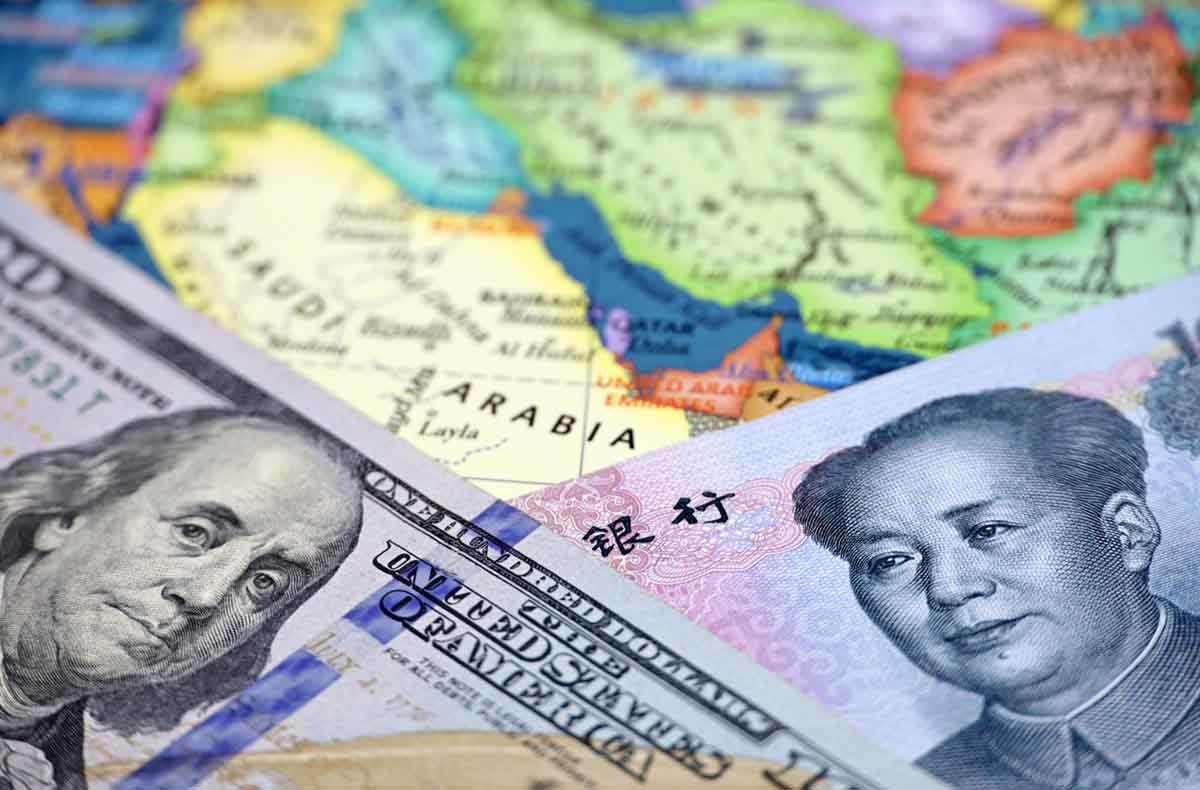
China brokering the restoration of bilateral ties between Saudi Arabia and Iran was almost instinctively downplayed in the U.S., not least inside the White House, with National Security Council Spokesman John Kirby reiterating that Washington is “far from stepping back in the Middle East.” The official reaction in the U.S. ranged from “de-escalation is what we’ve wanted all along” to “there’s no guarantee Iran will follow through anyway.”
Meanwhile, Riyadh and Tehran are all set to formally announce resumption of bilateral ties via an official meeting in the ongoing holy Islamic month of Ramadan—which carries symbolism and heralds optimism for sustained diplomatic relations. Even so, Beijing’s actual success lies in the fact that it’s not even remotely dependent on the Saudi-Iran pact being honored.
Saudi Arabia and Iran could go to war tomorrow and it would only give China regional—and bilateral—leverage to further enhance its presence. Alternatively, the move could usher a return to the Riyadh-Tehran cooperation around the turn of the century that the latest deal, significantly, alludes to, in turn officially unveiling the Chinese diplomatic success story in the most tumultuous part of the world. What Beijing has in Saudi-Iran dynamics is something Washington hasn’t had for a long time: actual sway over either side.
While the U.S. continues to sanction Iran and does not have any formal relations with it, Beijing has a $15.8 billion worth trade with Tehran, with China the number one importer of Iranian goods dominated by crude oil. China further benefits from Western sanctions by paying almost half the price per barrel compared to the international benchmark, getting further benefits from underreporting and mislabeling a chink of Iranian imports as “Malaysian” to further dodge the sanctions. Iran would endanger its sanctions-hit economy by breaching a China-brokered pact, while it doesn’t risk losing anything by defying American arm-twisting.
China is Saudi Arabia’s top trading partner, as President Xi Jinping loudly proclaimed during his visit to Saudi Arabia in December. This became the stepping stone to the Riyadh-Tehran deal, followed by Iranian President Ebrahim Raisi’s visit to Beijing in February. As Xi Jinping’s Belt and Road Initiative (BRI) merges with Mohammed bin Salman’s Vision 2030, Saudi Arabia and China are also upping the ante on military arrangements historically dominated by the U.S.
While Washington can churn out its “everybody wins” mantra, Saudi Arabia is visibly distancing itself from the U.S. amid Joe Biden’s hollow threats of “consequences” for Riyadh following last year’s OPEC+ refusal to reduce oil production and complete disregard for Western demands in Ukraine.
Whether it’s the war in Ukraine—where the U.S. is expending much of its military energy having left Afghanistan, and sidelined in the Middle East—or the progress in the Abraham Accords, the Arab states are clearly demonstrating that their geopolitical moves won’t be hinged on the ambitions of any global power.
In February, Saudi Arabia signed $400 million worth of agreements with Ukraine and expressed a desire to mediate talks with Russia, with which Riyadh has reaffirmed OPEC+ cooperation. Similarly, any formal normalization of ties with Israel would necessitate an integrated Middle East, which requires peace with Iran that Joe Biden vocally wants “isolated.” While the U.S. remains embroiled in the consequences of the far-right’s takeover of Israel, China is about to make the traditional American ally its first free trade partner in the Middle East.
As the U.S. remains bogged down in the Middle East by its commitments to Israel, China has stalled work on its own highest ever overseas investment in Pakistan—which Beijing has historically dubbed “our Israel”—after not getting everything its own way. China might reroute some of those projects—and the fulcrum of its $1.9 trillion BRI—in Afghanistan, where over $1 trillion worth of minerals are awaiting exploration. While the Western powers continue to freeze Afghan accounts over the Taliban rule and the regime’s gory gender discrimination, Chinese firms have signed a $540 million energy deal with the Taliban.
China displacing the U.S. in both South Asia and the Middle East is facilitated by its lack of overt ideological commitments, which in recent times have become a handicap for Washington—not least because its recent misadventures in the aforementioned regions have rendered those moral claims a grotesque parody of themselves. Furthermore, the Chinese leaders’ lack of democratic accountability back home allows Beijing to impose itself around the world without having to worry about its political costs.
Most critically, however, for the U.S., Washington never left the Cold War dugout even after the Soviet Union’s dissolution, still flying the flag of a Western, largely globally-disowned ideology in the age of ruthless pragmatism. For instance, where China and Russia endorse Islamist politics in Muslim-majority countries, and ignore the correlated brutalities, they don’t think twice before suppressing Muslim minorities at home. The U.S., on the flipside, invades and pulverizes these countries on a whim, while letting Islamist hegemony foster in Muslim minorities at home.
While Washington remains focused on Ukraine, once its attention returns to the Middle East and South Asia, the U.S. should push the restart button on its relations with the broader Muslim world. Having spent much of the past three quarters of a century actively participating in turmoil in that part of the world, American interests would be best served in shunning the cover of duplicitous ideologies and prioritizing self-interests over self-inflating narratives.


